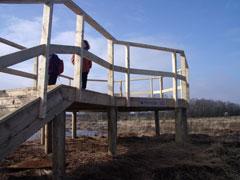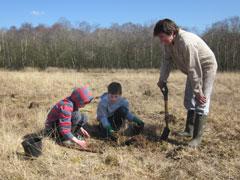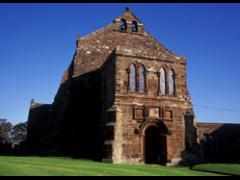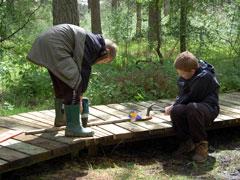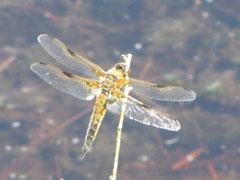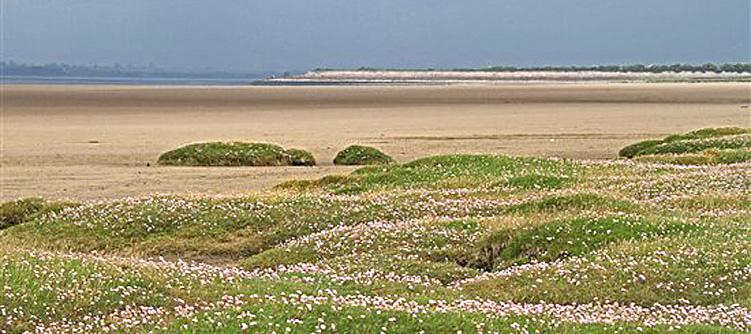
Expansive mudflats and marshes created by the ebb and flow of the tides
What is it?
The Solway estuary is a huge expanse of mudflats that are inundated by the incoming tide. The edges of the mudflats are bordered by saltmarsh, natural grasslands which form in the calm tidal estuaries away from the direct wave action of the sea. Hundreds of years of animal grazing on the marshes along with regular saltwater flooding produce the special habitat that we see today.
Why is it important?
The saltmarsh contains a unique mix of plants only found along the coast. The regular sea water flooding means that only special plants able to tolerate the harsh, salty conditions can grow there. Plants such as sea milkwort, scurvy grass and thrift can be seen flowering on the marshes in the spring and summer. Look carefully and you will see that many of these have fleshy leaves and stems with thick outer layers to help prevent water loss.
How it it managed?
The marshes are grazed with cattle from April to October to help prevent the vegetation from becoming too thick. Dams have been installed to block old drainage ditches and restore the shallow open pools, important for insects. This creates the ideal feeding ground for the range of birds and animals which live here.
Wildlife Highlights!
In autumn and winter large numbers of wading birds can be seen feeding on the muddy shore. Each bird is specially adapted to feed in this environment. Dunlins and oystercatchers use their long bills to probe for deep burrowing worms, whereas knots and grey plovers use their short stubby beaks to pick off insects near the surface. In spring and summer stop and listen to linnets, chiffchaffs and lesser whitethroats singing from the gorse scrub on the marsh edge. Natterjacks toads breed each spring in shallow pools on the Saltmarsh. These pools dry up in the summer which means that fish and dragonfly larvae, which eat natterjack tadpoles, cannot survive here. Very few habitats support this rare amphibian, making the Solway a very important place.


